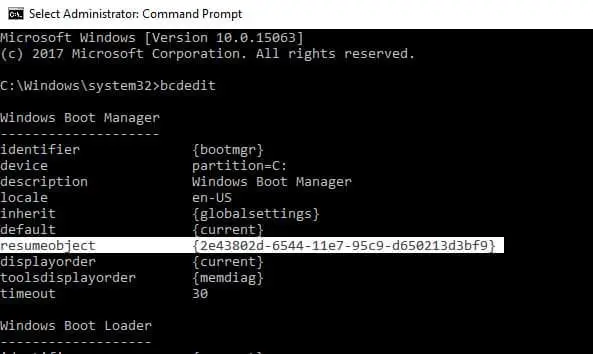Why did Windows stuck in the Automatic Repair loop?
Well when you start your PC the BIOS or UEFI Firmware is loaded, which performs a small set of checks on your hardware called the Power On Self Test (POST.) Next BIOS scans the hard disk master boot record, which loads an essential file into the main memory called WINLOAD.EXE.
This kicks off the start-up process by loading the NTOSKRNL.EXE (NT Kernel, the heart of Windows) and HAL (Hardware Abstraction Layer.) Windows 10 then performs tasks such as initializing your hardware like your mouse and keyboard and reading the Windows Registry and user profile.
But if something goes wrong, (Due to power interruption, corrupted Windows update installed, system files get corrupted etc) with Windows it fails to start normally at startup. To fix this problem windows start the diagnostic process “Preparing Automatic Repair” at startup to fix this problem.
How to fix Windows 10 Automatic Repair Loop?
There are many reasons behind the Windows Automatic Repair loop. However, the most common problem is the corrupted registry or missing files on the hard disk. Since Windows keeps restarting, it is impossible for you to access Advanced Options, so you can fix the problem there. In this case, you need to boot from a Bootable USB or DVD. If you don’t have any then create a bootable USB /DVD.
- When you are ready with the Installation media insert it to your PC and change the BIOS setup to boot from DVD / Removable Disk (As you use either DVD or Bootable USB ).
- Skip the first screen on the next screen and click on Repair your computer at the bottom. Then click on Troubleshoot>Advanced Options.
Use SFC and Check Disk Utility
When you get the Advanced options you will find a number of tools to fix different startup problems. As discussed before Windows Automatic Repair loop is mostly cause due to corrupted system files or disk drive errors. So first run the system file checker utility and chkdsk utility to fix the Windows automatic repair loop.
- To do this click on the Command prompt option on the advanced options screen.
- When the advanced command prompt opens type sfc /scannow and hit the enter key to execute the command.
- After 100% complete the scanning process type the command chkdsk c: /f /r to run the chkdsk utility which checks and fix disk drive errors.
- After that close the command prompt and Restart windows check start normally without and startup repair loop?
Fix Boot MGR and Rebuild BCD
If you still having the same issue Windows Stuck in Automatic Repair then try to repair boot mgr and rebuild BCD by following below. To do this again open the command prompt from advanced options and perform the commands below one by one.
- bootrec /fixMBR
- bootrec /fixboot
- bootrec /rebuildBCD
After executing these commands type exit to close the command and restart Windows check this time windows started normally.
Restore Windows Registry
Still, the problem didn’t fix and getting Windows Stuck in the Automatic Repair loop at startup? Then maybe a corrupted registry causing the issue. Follow the steps below to restore the Windows registry and fix this Automatic repair loop. For this again open the command prompt from Advanced options. Now Type the command below and press Enter key to execute the same.
copy c:\windows\system32\config\RegBack\* c:\windows\system32\config
If prompted to overwrite existing files, type All and hit Enter. Close the command prompt and restart Windows, On the next start Check Windows started normally.
Disable Automatic Startup Repair
If none above solutions help fix the Windows automatic repair loop, then you should try to Disable Automatic Repair at boot.
Again access the command prompt from Advanced options and type bcdedit and hit Enter. Then you will see the result displayed. Look for resumeobject item and note the number next to it (In my case, the number is {2e43802d-6544-11e7-95c9-d650213d3bf9} )
Now to disable automatic startup repair Type bcdedit /set GUID recoveryenabled No and hit Enter. Here Replace GUID with the number that you noted in last step. (For example, if the number is 2e43802d-6544-11e7-95c9-d650213d3bf9, the full command will be “bcdedit /set 2e43802d-6544-11e7-95c9-d650213d3bf9 recovery enabled No”)
Reboot your PC and Windows should start without any problem.
Refresh or Reset Your PC
If the Windows Automatic Repair loop issue still exists after trying the above solutions, you can try the last method- performing a refresh or reset- to fix the Windows Automatic Startup Repair boot issue. To do this choose option Refresh your PC or Reset your PC on advanced options. Then follow on-screen instructions to complete the process.
These are some most applicable solutions to fix Windows startup problems such as Windows Stuck in Automatic Repair, startup repair couldn’t repair your pc, the automatic repair couldn’t repair your pc, windows stuck preparing for automatic repair etc. I hope to apply the above solutions fix your startup problem and start Windows normally without any Windows Stuck Automatic Repair loop. Still, have any queries or suggestions about this post feel free to discuss on the comments below.
Also Read




